Like a masterful illusionist’s trick, mirror plants can transform your living space by creating depth and amplifying natural light. You’ll discover how these reflective beauties, such as the shimmering Pilea spruceana and metallic-leafed Tradescantia zebrina, can double the visual impact of any room while maximizing limited square footage. From strategic corner arrangements to vertical garden installations, these versatile plants offer practical solutions that’ll revolutionize your approach to small-space decorating.
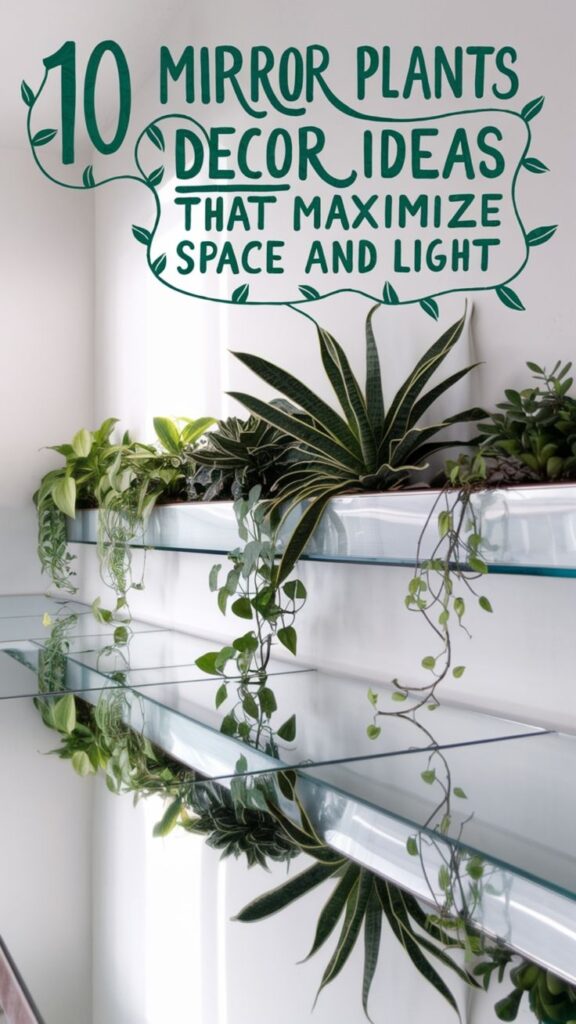
Contents
- 1 Strategic Corner Placement for Room Expansion
- 2 Creating Light-Reflecting Plant Clusters
- 3 Windowsill Mirror Plant Arrangements
- 4 Vertical Mirror Plant Gardens
- 5 Mirror Plants as Dining Area Centerpieces
- 6 Entryway Brilliance With Reflective Foliage
- 7 Bathroom Brightening With Mirror Plants
- 8 Home Office Space Enhancement
- 9 Bedroom Mirror Plant Styling
- 10 Small Space Solutions With Mirror Plants
Strategic Corner Placement for Room Expansion
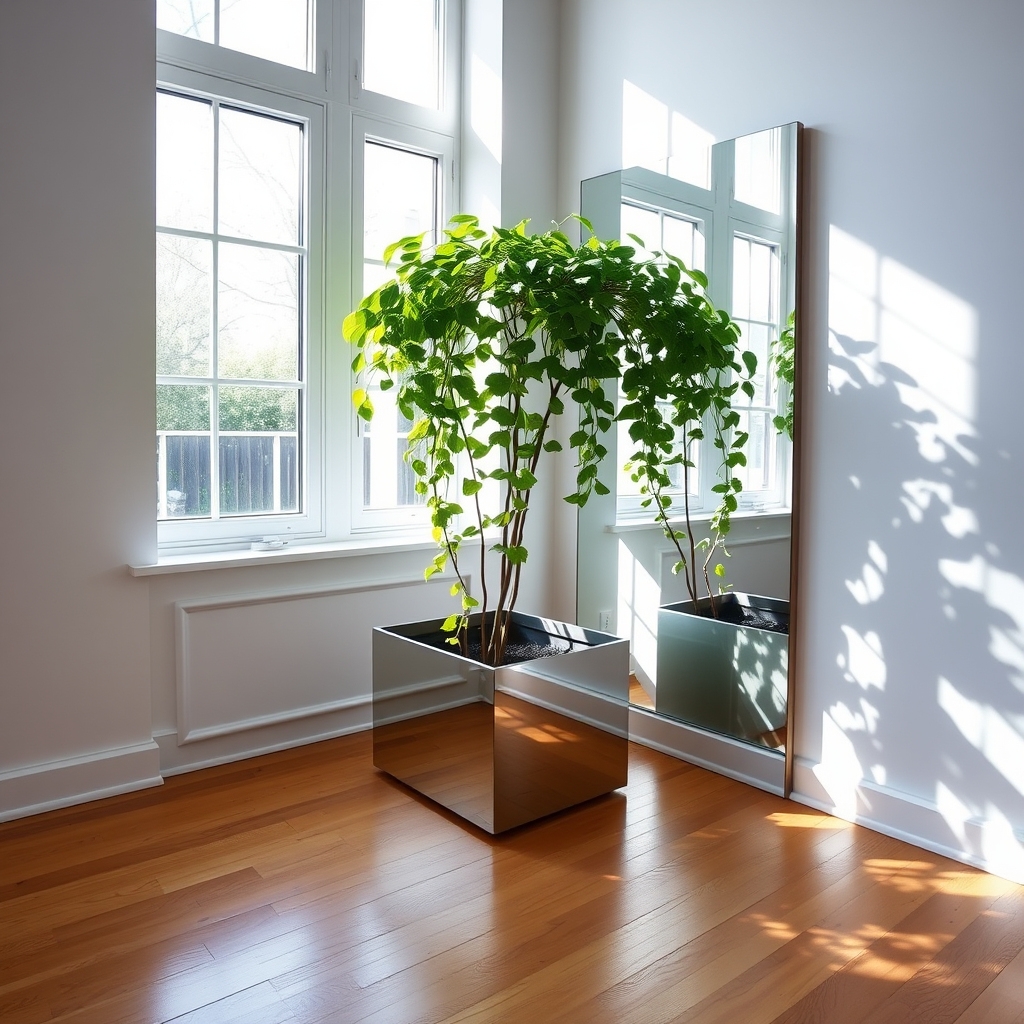
Strategic corner placement of mirror plants creates an optical illusion that expands tight or cramped spaces.
Mirror plants positioned in room corners reflect light and surrounding greenery, visually doubling the space while adding depth to otherwise unused areas.
The arrangement typically involves placing reflective planters or mirrored vessels containing trailing plants like pothos or ivy in corner spaces, allowing the foliage to cascade naturally.
This setup maximizes both vertical and horizontal perspectives, making rooms appear larger and more open while maintaining a cohesive, natural aesthetic.
The reflective surfaces catch and bounce light throughout the space, brightening dark corners and creating a seamless blend between real plants and their mirrored duplicates.
Creating Light-Reflecting Plant Clusters
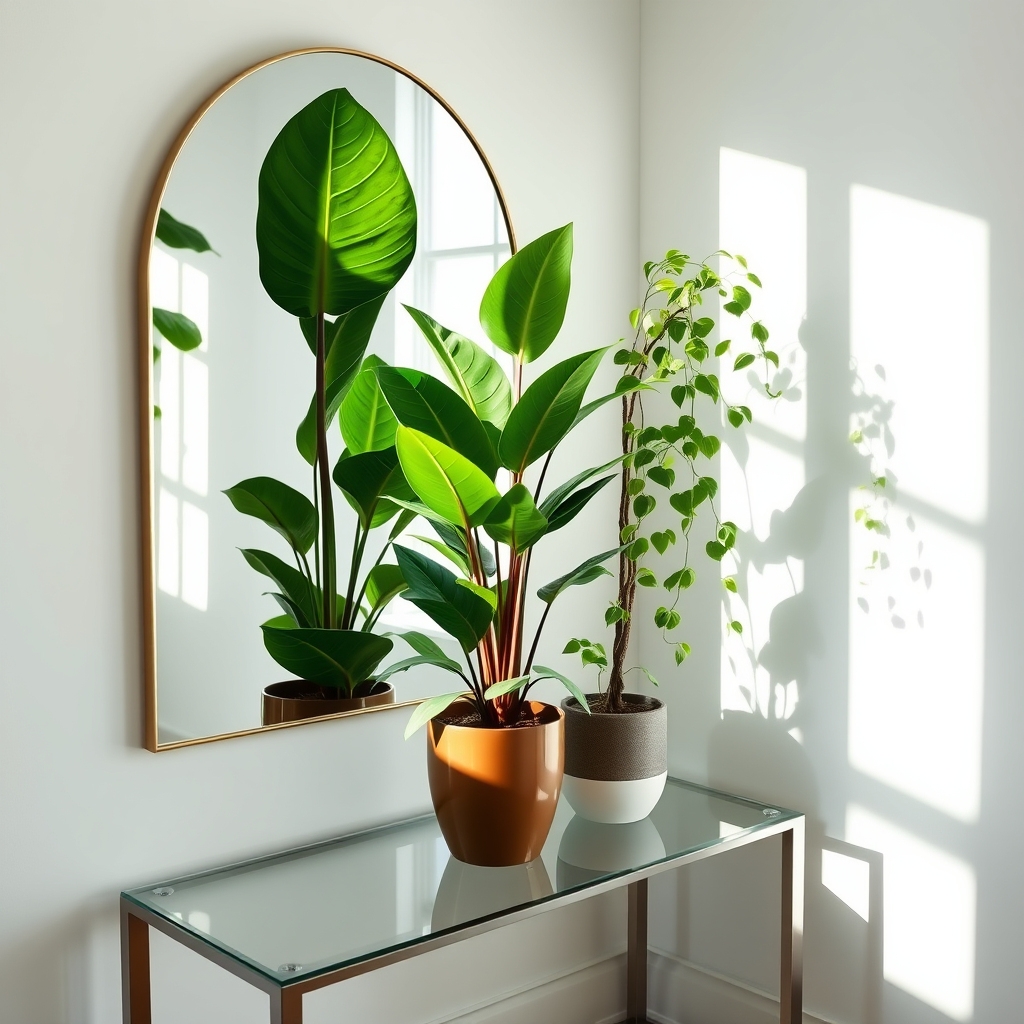
Light-reflecting plant clusters combine mirrors and plants to create stunning visual displays that amplify natural light and greenery.
These arrangements feature strategically placed mirrors behind or alongside plant groupings, creating an illusion of depth and multiplying the appearance of foliage. The mirrors reflect both natural and artificial light throughout the space while capturing different angles of the plants, making the arrangement appear fuller and more dynamic.
Key characteristics:
- Multiple plants grouped at varying heights
- Mirrors positioned to catch and bounce light
- Layered arrangement with both trailing and upright plants
- Strategic placement near light sources
- Creates depth and dimension in small spaces
- Doubles the visual impact of decorative plants
- Can incorporate different mirror shapes and sizes
- Works well with both small houseplants and larger specimens
Windowsill Mirror Plant Arrangements
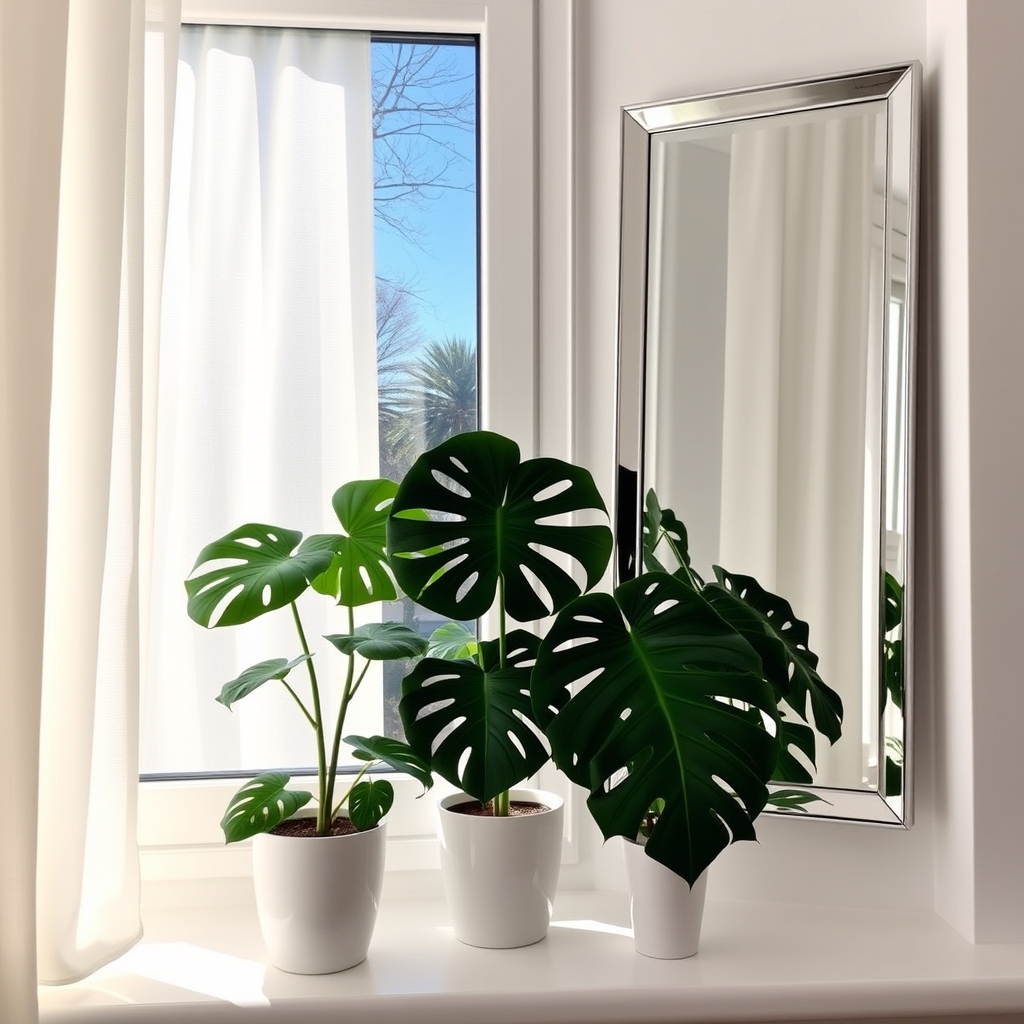
Windowsill Mirror Plant Arrangements combine live plants with strategically placed mirrors to create depth and multiply natural light in window spaces.
Small mirror panels or reflective tiles positioned between potted plants reflect sunlight throughout the room while creating the illusion of additional greenery.
These arrangements typically feature compact plants in varying heights, with mirrors angled to capture outdoor views and maximize light exposure.
The unique feature of this design lies in its ability to both enhance natural lighting and create the appearance of a fuller, more lush plant display without requiring additional windowsill space.
Vertical Mirror Plant Gardens
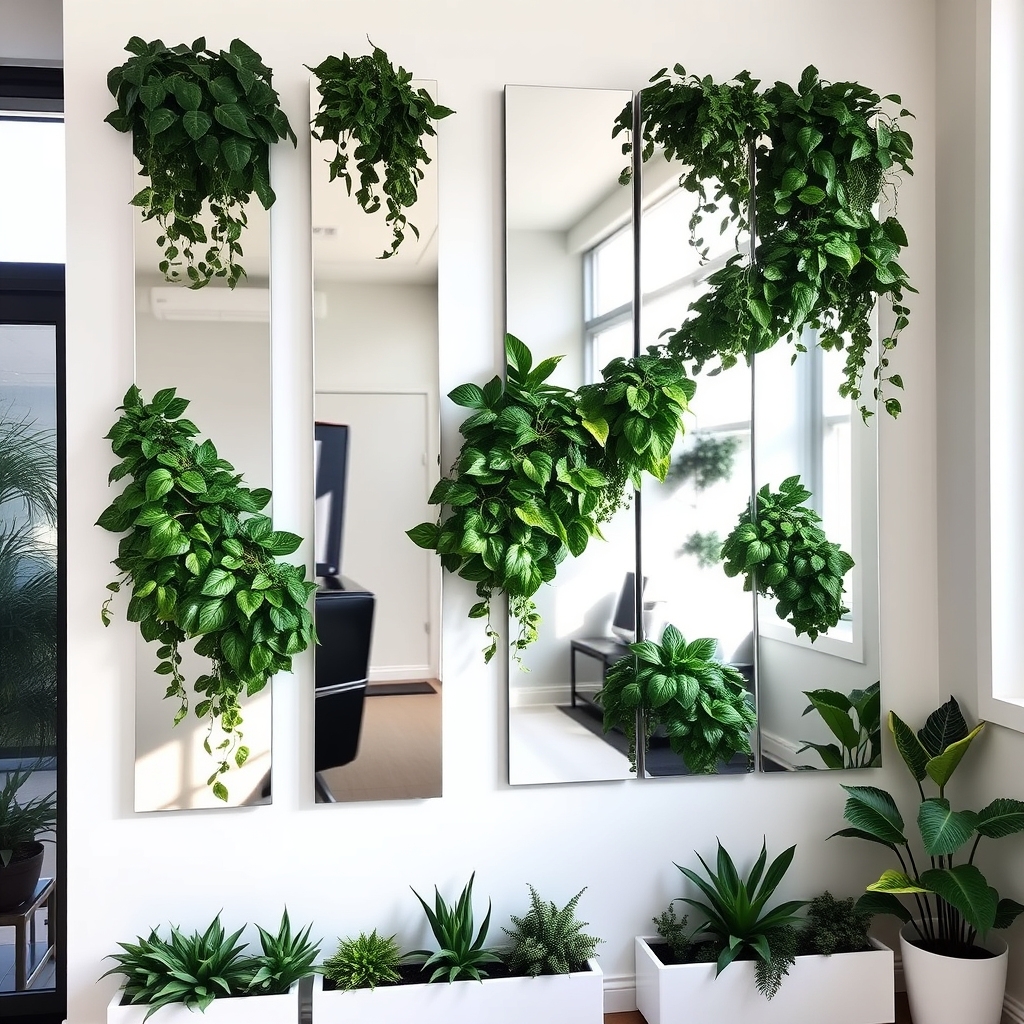
Vertical mirror plant gardens combine reflective surfaces with living greenery in an upward-oriented design.
These installations feature mirrors as backdrops or interspersed elements within vertical plant arrangements, creating an illusion of depth and multiplying the visual impact of the foliage.
Plants are typically mounted on wall-mounted frames or tiered structures, with mirrors strategically placed to reflect light and create the appearance of a larger, more abundant garden space.
The design can incorporate various plant types, from succulents to trailing vines, arranged in patterns that are enhanced by the mirrors’ reflective properties.
This style is particularly effective in small spaces or areas with limited natural light, as the mirrors help amplify both light and the perception of space.
Mirror Plants as Dining Area Centerpieces
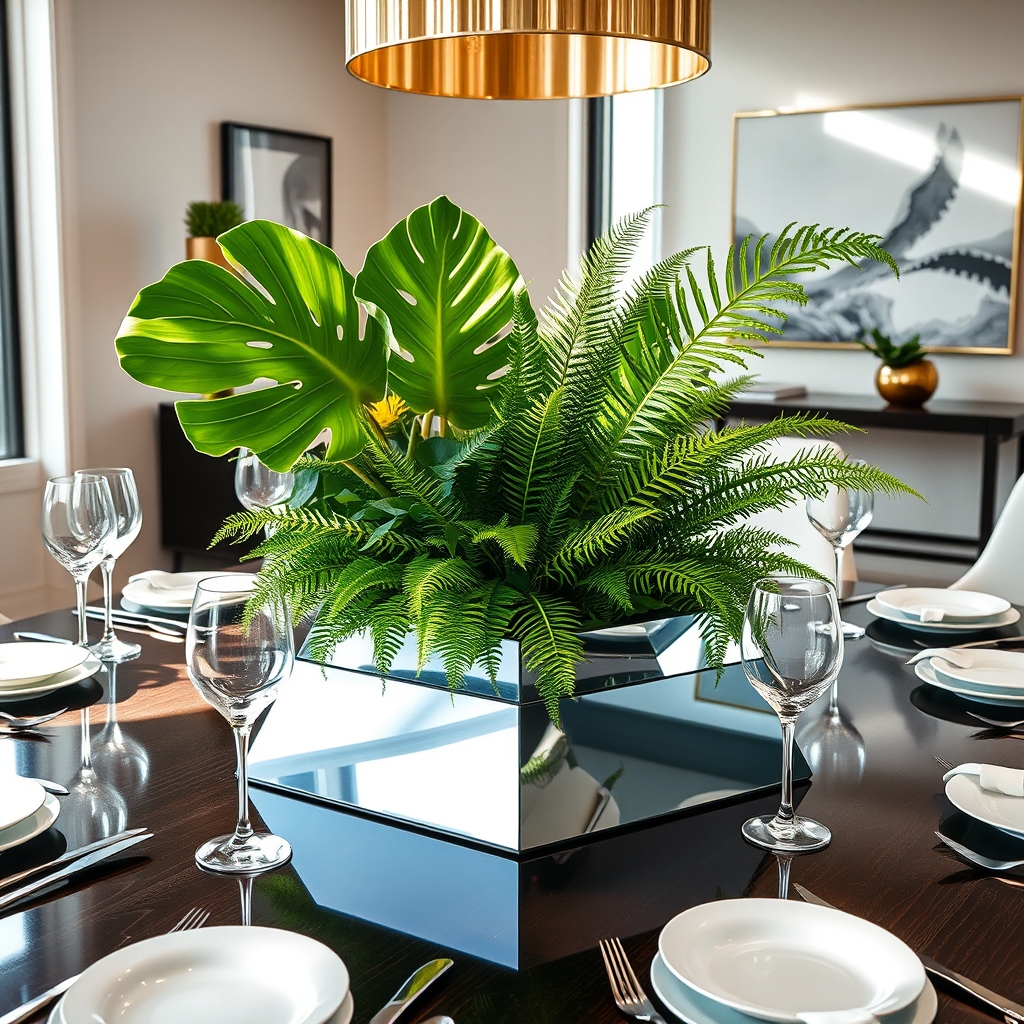
Mirror plants as dining area centerpieces create striking table arrangements that combine natural greenery with reflective surfaces. These decorative pieces typically feature carefully arranged plants surrounded by or placed on mirrored platforms, trays, or geometric shapes.
The mirrors multiply the visual impact of the plants while reflecting light and creating depth across the dining table.
Key features include:
- Polished mirror bases that reflect both the plants and overhead lighting
- Multiple levels or tiers to create visual interest
- Mix of plant varieties with different textures and heights
- Optional additions like candles or metallic accents
- Low-profile designs that don’t obstruct dinner conversation
The reflective elements make the centerpiece appear more substantial without taking up excessive space, while the living plants add warmth and natural beauty to formal dining settings.
These arrangements work particularly well in modern and contemporary dining rooms where they complement sleek furnishings.
Entryway Brilliance With Reflective Foliage
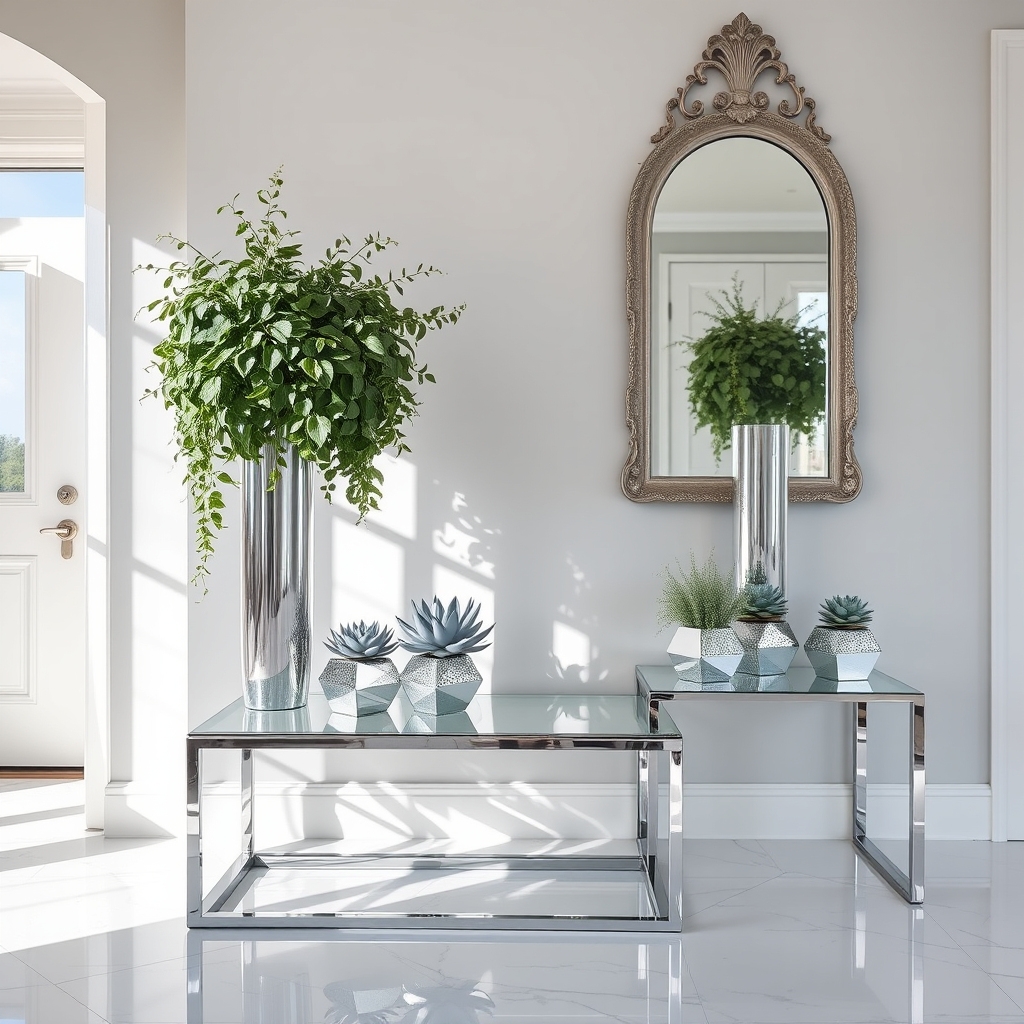
Entryway Brilliance With Reflective Foliage combines metallic plants and mirrored elements to create a stunning first impression in home entrances.
Silvery-leafed plants like Silver Falls dichondra, Dusty Miller, and metallic painted succulents are arranged alongside mercury glass vases and mirrored planters.
The arrangement typically features cascading elements and varying heights, with taller plants positioned against walls or on pedestals.
Strategic placement of these reflective elements amplifies natural and artificial light, making the entryway appear larger and more welcoming.
The metallic and mirrored surfaces create dynamic light play throughout the day, while maintaining an elegant, modern aesthetic that works well in both contemporary and traditional spaces.
Bathroom Brightening With Mirror Plants

Mirror Plants for bathroom brightening create a reflective, luminous effect through strategic placement of plants with naturally shiny or metallic-looking foliage.
These plants feature leaves with glossy surfaces that bounce light around the space, making bathrooms appear larger and more vibrant.
Key characteristics include plants with reflective qualities like Pilea peperomioides (Chinese Money Plant), Peperomia metallica, and Calathea varieties with silvery patterns.
The plants are typically arranged near light sources or mirrors to maximize their light-reflecting properties.
This decor approach works particularly well in bathrooms with limited natural light, as the reflective foliage helps distribute available light while adding natural elements to the space.
The plants can be displayed on countertops, window sills, or hanging planters to create varying levels of reflection throughout the room.
The combination of moisture-loving plants and their mirror-like qualities makes them especially suitable for bathroom environments, where they can thrive in humid conditions while enhancing the room’s brightness and spatial perception.
Home Office Space Enhancement
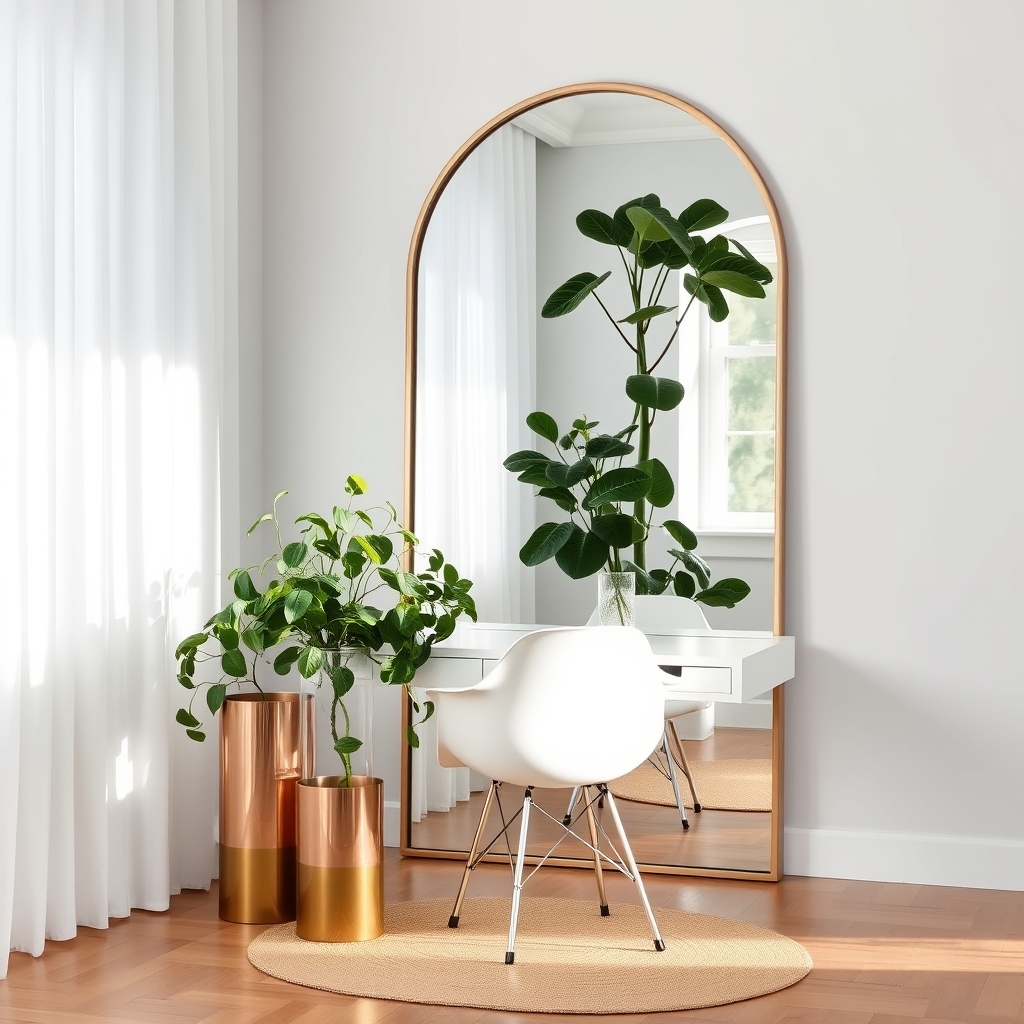
Strategically placed mirrors in a home office create an illusion of expanded space while enhancing natural light distribution.
Mirror plants, whether real plants reflected in mirrors or mirrored plant-shaped decor pieces, add depth and visual interest to workspace walls. The combination of greenery and reflective surfaces helps reduce the confined feeling of smaller office spaces, making them appear more open and airy.
Common applications include floor-length mirrors bordered by potted plants, mirrored wall planters, and reflective surfaces positioned opposite windows to maximize natural lighting.
This decor approach serves both functional and aesthetic purposes, improving workspace ambiance while maintaining professional sophistication.
Bedroom Mirror Plant Styling

Mirror plants in bedroom settings create reflective focal points while adding natural elements to the space. Strategically placed mirrors behind plants multiply the appearance of greenery and amplify natural light.
Common arrangements include floor-standing mirrors with tall plants like fiddle leaf figs or snake plants positioned at angles, vanity-top displays with trailing pothos or ivy, and wall-mounted mirror clusters surrounded by air plants or hanging varieties.
Key features include:
- Layered positioning of plants at different heights
- Mix of plant textures against reflective surfaces
- Use of metallic or glass planters to enhance the mirror effect
- Strategic angle placement to maximize light reflection
- Combination of both hanging and standing plants
- Integration with existing bedroom furniture and decor
The style particularly benefits rooms with limited natural light, as mirrors effectively double the visual impact of greenery while brightening the space.
Small Space Solutions With Mirror Plants
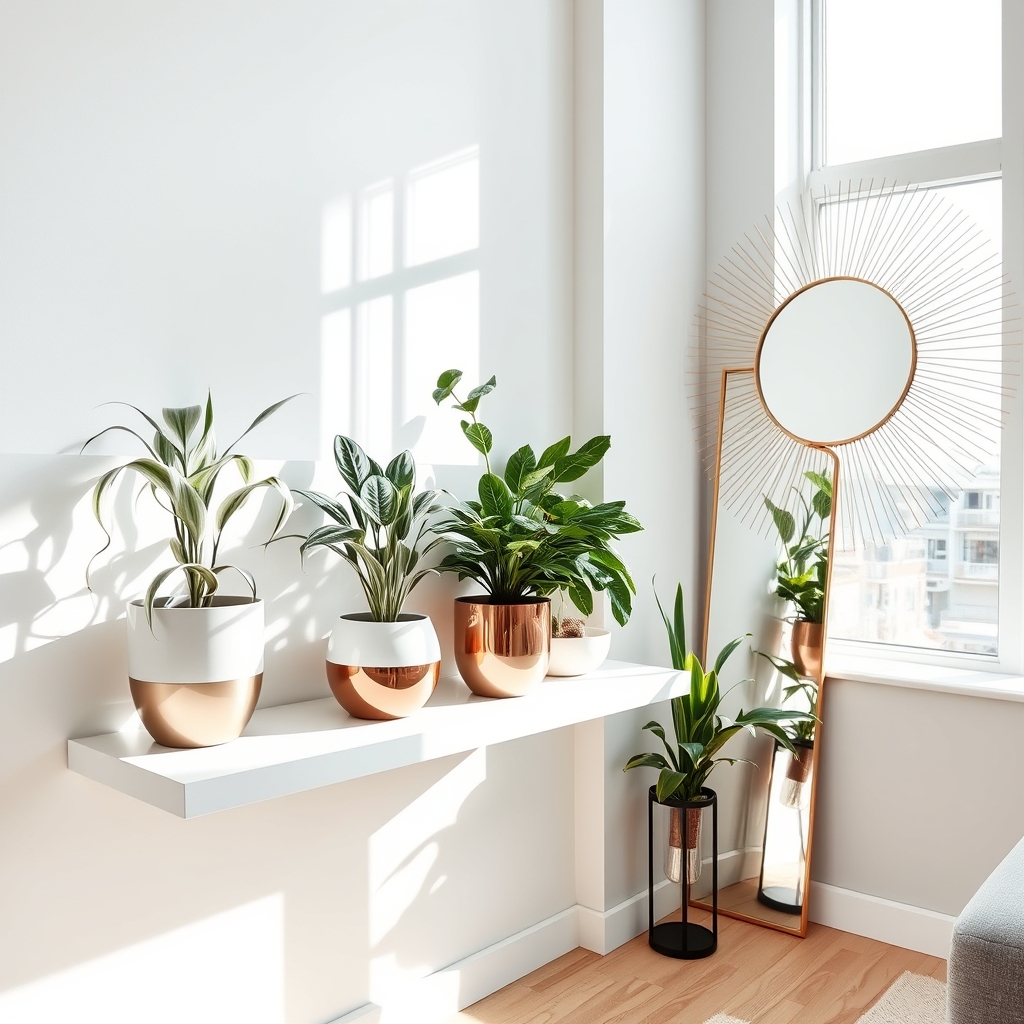
Small space solutions with mirror plants focus on maximizing limited areas through strategic placement of plants with reflective or silvery foliage.
These plants create an illusion of expanded space while adding visual interest to compact rooms, balconies, or corners.
Key features include:
- Plants with metallic, silver, or mirror-like leaves that reflect light
- Compact growth habits suitable for tight spaces
- Versatile positioning options (hanging, wall-mounted, or tabletop)
- Light-enhancing properties that brighten dark corners
- Low-maintenance varieties that thrive in confined areas
Popular mirror plants for small spaces:
- Silver inch plant (Tradescantia zebrina)
- Aluminum plant (Pilea cadierei)
- Silver nerve plant (Fittonia albivenis)
- Japanese painted fern
- Mirror grass (Oplimenus hirtellus)
These plants work particularly well in:
- Studio apartments
- Mini balconies
- Windowsills
- Bathroom corners
- Small office spaces
